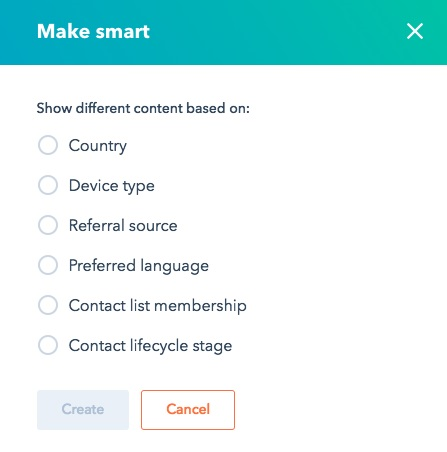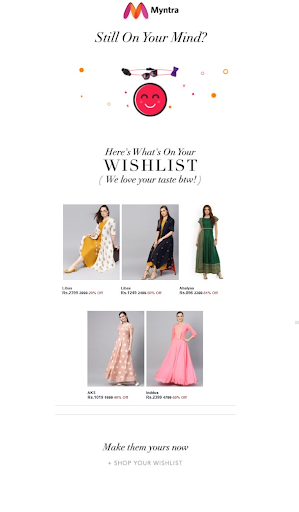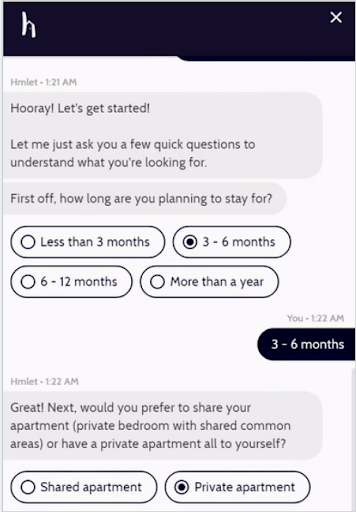
Personalization seems to be one of the hottest buzzwords in the marketing world at the moment. However, not many people know how to do it effectively. Naturally, there’s a lot of confusion around this concept.
What is personalization in digital marketing?
Personalization is the process of knowing the needs, preferences, and interests of your current and prospective customers so that you can serve them exactly what they’re looking for when they’re looking for it. When done right, personalization can help you engage customers better through relevant communications, offer exceptional customer experiences, boost loyalty and retention, and increase sales.
Boston Consulting Group predicts that by 2022, $800 billion in revenue is likely to shift to the 15% of companies that get personalization right. So, here are some great tips on how to use technology to make your personalization goals a reality.
Boston Consulting Group predicts that by 2022, $800 billion in revenue is likely to shift to the 15% of companies that get personalization right.
1. Smart Content
Smart Content (also known as adaptive or dynamic content) refers to the aspects of an email, ad, landing page, or website that can be changed based on the past behavior or interest of a user. You can think of it as content that’s tailor-made specifically for the person who’s viewing it.
HubSpot allows you to create smart content for your audience using their location, demographics, device type, referral source, and language as criteria. It does so using cookies stored in the browser of a visitor.

HubSpot allows you to create smart content for your audience using their location, demographics, device type, referral source, and language as criteria.
When someone visits your website for the first time, HubSpot analyzes their device type, language, location etc. and if they meet any of your smart rules, they will be shown content that’s relevant to them. On subsequent visits, HubSpot uses their stored cookies to retrieve the information and display relevant content based on smart rules you’ve set up.
These features are currently available to HubSpot Marketing Hub Enterprise and Professional customers. You can create smart forms, CTAs, or rich text modules in emails, landing pages, or your website.
Here’s an example of smart content in an email from ecommerce brand Myntra. Based on the products added to a user’s wishlist, Myntra sends them an email to remind them of these items and encourages them to make a purchase. Such personalization helps to engage customers better and boosts sales.

Here’s an example of smart content in an email from ecommerce brand Myntra.
2. Personalized Videos
Videos are one of the most popular forms of content among users of all age groups today. On average, people spend 6 hours and 48 minutes per week watching videos online. What’s more? The average time spent by people watching videos has recorded a 59% increase since 2016.
On average, people spend 6 hours and 48 minutes per week watching videos online.
The main reason why people love watching videos is because of their highly interactive nature. In fact, personalized videos can be the best form of interactive marketing given that messages through videos are retained better. It’s, therefore, no wonder that 68% of people prefer watching videos when it comes to learning about a new product or service over text, infographics, ebooks, and presentations.
So, you can leverage this highly engaging form of media to achieve your personalization goals. When you send a personalized video to your customers or prospects, it can make them feel special and might encourage them to share it online to create a viral campaign.
You can leverage Vintom to create personalized videos for your audience using personalized voice-overs, dynamic images and data, geolocalization, and much more. Here’s an example of such a video.
3. AI Chatbots
Chatbots are nothing but automated programs designed to reside on applications such as WeChat, WhatsApp, Facebook Messenger, or on web pages that allow your visitors to access useful information or get support instantly. AI powered chatbots are great at engaging your leads and can help to provide them with a highly personalized experience.
For example, one of the best chatbots in Singapore can be seen on a co-living firm, Hmlet’s website. It is designed to help users find a new home very easily. It begins the chat experience by asking a few questions to understand a user’s preferences and interests. It then assists you to find the information you’re looking for.

The Hmlet chatbot begins the chat experience by asking a few questions to understand a user’s preferences and interests. It then assists you to find the information you’re looking for.
4. Exit Intent Pop-Ups
Did you know that only 1% of your first-time website visitors actually intend to make a purchase? The rest are simply looking for information about your products or services or their prices and will leave as soon as thy’ve found it.
Only 1% of your first-time website visitors actually intend to make a purchase.
What if you could capture some of these leads? Here’s where a personalized exit intent pop-up can help you. These pop-ups would appear on the screen of a user whenever they attempt to leave your site. Studies have shown that 35% of lost visitors can be re-engaged using these pop-ups.
OptinMonster is a solution that helps you create exit intent pop-ups easily and capture some of the traffic on your website.
is an example of a marketing automation software that can help you create exit intent pop-ups easily and capture some of the traffic on your website. The moment that users try to hit the X button on their browser, you can display a pop-up that takes over most of their screen (so as to capture their attention). For example, the pop-up below will take over your entire screen whenever you attempt to leave Neil Patel’s website.
How to Make Your Personalization Goals a Reality
While personalization might be all the rage right now, you must not try to run before you can walk if you’re new to the game.
Are Your Customers Ready?
The first step towards this would be to know your customers well enough. Are they happy with your services? What would they like you to improve upon? The answers to such questions can be a great starting point in understanding whether or not they are ready for personalization. You can leverage tools such as Qualaroo or SurveyAnyPlace to float such surveys and gather insights.
Consider the Benefits and Costs
The other thing you need to do is to think strategically about what problems personalization can help to resolve. Personalization is going to involve a lot of data collection, analysis, and targeting which means that there will be some serious complexities.
You’ll need a whole system to manage the data plus there will be additional costs to manage customized content or experiences. So, you’ll need to think carefully if the benefits of personalization might outweigh these additional costs and complexities or not.
B2B vs B2C Personalization
You need to also remember that B2B personalization will be more complex than B2C because there are several decision makers in a B2B sales process and the customer journey is fragmented. However, it’s not impossible. The important thing is to make sure that you provide each stakeholder with personalized information and content that they might be most interested in.
Final Thoughts
No doubt that effective personalization can offer a large number of benefits including better customer engagement and greater ROI. However, you’ll need to have a rigorous testing program in place before you start.
Smart content, personalized videos, chatbots, and exit intent pop-ups are all pretty useful tools to have in your arsenal but make sure both you and your customers are ready for them.
The post Personalization in Digital Marketing: What It is and How to Make It Happen appeared first on Content Marketing Consulting and Social Media Strategy.
